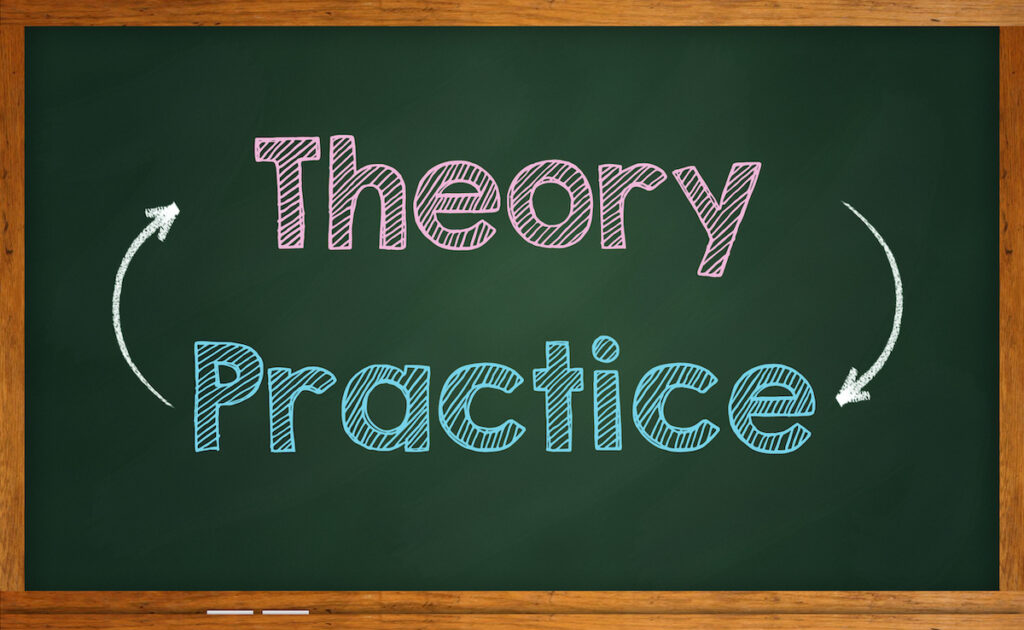
Eleven years ago, I was diagnosed with a severe case of sudden-onset Rheumatoid Arthritis. Overnight, I went from active and energetic to seriously disabled and in constant pain. My life, both personal and professional, was greatly diminished. So I am in deep accord with the attempt by Carroll et al., to develop an evidence-based theory of psychological adjustment to long-term physical health conditions (LTCs), and to set out some clinical guidelines for the treatment of psychological distress for those suffering from such conditions.
LTCs are not uncommon: according to the authors, 30% of the English population and 60% of Americans are diagnosed with one or more LTCs. Perhaps not surprisingly, those with LTCs are 2 to 3 times more likely than others to experience symptoms of depression and/or anxiety. Although each LTC carries with it its own set of challenges, they share the need for psychological adjustment to the limitations of the condition.
About 30% of people with LTCs experience comorbid anxiety and depression. Their psychological distress is often linked to a range of emotional, social, physical, practical, and economic factors related to their condition.
In this study, the researchers describe a transdiagnostic model to address this problem via an extensive and comprehensive process, integrating research evidence with clinical practice with people diagnosed with LTCs (Carroll et al, 2022).

Psychological distress makes sense when you’ve just been diagnosed with a long-term physical health condition like MS or Rheumatoid Arthritis.
Methods
The transdiagnostic model for addressing LTCs proposed by the authors was informed through an iterative process that included an extensive review of the empirical literature, as well as the contributions of several experts working with people coping with and adjusting to LTCs. They engaged in a rigorous theory development process to ensure that any resulting recommendations for assessment and treatment would be grounded both in the research and in understandings of best clinical practice.
The authors began with a systematic search for models of adjustment to LTCs, which resulted in their screening 6,142 articles. Ten articles were included in the narrative synthesis that was used in the next stage of the study, and a further 11 review articles were identified as providing key concepts for consideration.
The authors extracted models of adjustment from each article and synthesised them into a preliminary model of transdiagnostic adjustment. They engaged in a collaborative iterative process, making changes to the model until all authors agreed that all key concepts and themes were included.
After developing the preliminary model, the researchers held two meetings in order to obtain an expert consensus on the factors most relevant to adjustment across different LTCs. The selected experts (7 in the first meeting and 8 in the second) came from both clinical and academic backgrounds.
Each of these meetings began with a discussion of factors missing from the model and proceeded to individual ratings of each of the factors’ importance to LTC adjustment. The researchers collated the results and asked the experts to discuss unexpected results. The two groups’ ratings were then combined, analysed, and discussed. The expert panelists were then asked whether any factors should be rerated.
Results
The article under discussion is not a research study. Instead, it is a report on a collaborative process of developing a theory-based model that can inform practical clinical applications. This Results section is therefore a description of the model that emerged from this process.
The proposed transdiagnostic model of psychological adjustment to LTCs acknowledges that the stressors resulting from having an LTC, including symptom management and threat to mortality, can disrupt a person’s equilibrium. The process of adjustment includes returning to a state of equilibrium.
Carroll, Moon, et al., observe that it’s a person’s interpretations of their illness that guide their coping mechanisms. Returning to a state of equilibrium, therefore, involves:
- developing an accurate interpretation of one’s illness and symptoms;
- establishing appropriate cognitive, behavioural, and emotional responses to the situation;
- evaluating how well the coping mechanisms work; and
- adapting them as needed.
Further, the way in which a person responds to diagnosis, ongoing symptoms, and treatment is influenced by their interpersonal, intrapersonal, environmental, and illness-specific contexts.
The transdiagnostic model of psychological adjustment to LTCs is presented as a complex figure that shows the factors that facilitate and undermine a person’s adjustment to an LTC. These include, among many other factors, mindfulness, self-efficacy, and a strong network of social support as protective factors; and rumination, distrust of services, and threat to mortality as factors that can exacerbate psychological distress.
The model differentiates between illness-specific factors (such as beliefs about the illness) and generic mental health concerns (such as global helplessness). It shows how treatment can be adapted to address illness-specific concerns in the context of generic factors.
The authors describe a case study to illustrate how the model works in practice: Megan, a previously healthy 35-year-old, was diagnosed with Multiple Sclerosis. For the first two years, despite experiencing fatigue and financial pressure, Megan continued with life as usual, including a full-time job as a teacher, an active social life, and training as a member of a running club. She recently experienced a severe relapse of MS, including exacerbation of her symptoms. Not surprisingly, she began to experience mental distress.
The paper provides a detailed table showing assessment areas to target when working with a person with an LTC, and key assessment points within each area. Among many others, these include practical considerations like fatigue; protective factors like social support; and emotional factors, such as the person’s reactions to their symptoms. The table lists sample questionnaires to use in combination with clinical interviews to aid assessment and provides examples to illustrate each assessment area, based on the case study.
Thinking about treatment timing, the authors suggest that therapists consider clinical guidelines for the treatment of post-traumatic stress disorder and bereavement, which suggests actively monitoring the person’s well-being, but waiting between 4 weeks and 6 months before intervention.
The expert panelists recommended that practitioners avoid pathologising any disequilibrium that results from having an LTC. They suggested that “psychological adjustment” is a more helpful diagnostic label than the commonly used “adjustment disorder.”

Psychological disequilibrium can be expected following diagnosis with an LTC, however, practitioners should avoid pathologising the distress.
Conclusions
The authors used a thoughtful, iterative, collaborative process to develop a transdiagnostic model of adjustment to a long-term physical health condition. The resulting model, informed both by empirical studies and by clinical expertise, provides a detailed and useful guide for assessment, diagnosis, and treatment.
The proposed model recognises that having an LTC can disrupt a person’s emotional equilibrium and that returning to equilibrium depends on a number of cognitive and behavioural factors, as well as interpersonal, intrapersonal, environmental, and illness-specific contexts. A case study is used to illustrate the clinical application of the model, showing how it differs from standard mental health approaches that treat psychological issues somewhat independently of LTCs.
Carroll and colleagues observe that Cognitive Behavioural Therapy maps most readily onto their proposed model. They acknowledge that other therapeutic approaches may also be beneficial and that intervention choice can be guided by contextual factors.

The transdiagnostic model of adjustment to long-term physical health conditions has been informed both by empirical studies and by clinical expertise.
Strengths and limitations
The transdiagnostic model discussed here is enormously beneficial for that segment of the population that has both a long-term physical health condition like Multiple Sclerosis or Rheumatoid Arthritis and is also experiencing psychological distress.
Grounded in theory and informed by clinical practice, the model provides a blueprint for assessment and treatment that’s effective across a range of conditions, so it can be used more widely and is more cost-effective than protocols developed for particular LTCs. It recognises the individual’s resiliency and stress factors, the supportive mechanisms as well as the factors challenging equilibrium while taking into account the context in which the person lives.
The model emphasises a multi-disciplinary approach and provides practical and specific recommendations for assessment and treatment.
One of the strengths of the report is the use of the case study of Megan, a woman with Multiple Sclerosis. The description of Megan’s situation illustrates the model in practice, highlighting the ways the model assists mental health practitioners in taking into account an underlying long-term physical health condition.
However, Megan’s case illustrates the application of this model to Multiple Sclerosis. I would love to have seen brief discussions of the potential application to Long-COVID, Rheumatoid Arthritis, and perhaps other LTCs.
Long-term physical health conditions usually change over time, with concomitant changes in the adjustment challenges. The authors point out that longitudinal studies monitoring changes over time in the context of illness-related stressors would inform our understanding of the psychological adjustment process in the long term.

The transdiagnostic model of psychological adjustment to long-term conditions supports mental health practitioners in adapting assessment and treatment.
Implications for practice
When I was first diagnosed with an LTC, I had a hard time adjusting to my new reality. Not only was I experiencing a great deal of debilitating pain and having to spend far too much of my time and energy seeking medical help, but I had to pull back on commitments and give up aspects of my life that I loved. It affected all activities, both personal and professional. My identity as an energetic, mobile, and competent person was shattered. I had a high level of support and several other resiliency factors, and was able to adjust to the new reality without seeking psychological help, but had I done so, I would have wanted to find a therapist working from this model.
It took some time and some excellent medical help, but I’m happy to say that I’m only experiencing a few symptoms now: fatigue and some side effects of the drugs I take to keep the condition in remission. I have relapses from time to time when it once again becomes challenging to achieve emotional equilibrium. It’s comforting to know I can return to this model if I need it in the future.
Practitioners who want to work with this model might start with Figure 1, “TMA-LTC Summarizing the Biological, Social, and Psychological Etiological Mechanisms of Adjustment,” (TMA-LTC=transdiagnostic model of adjustment to long-term physical health conditions) (Carroll et al, 2022). The model is delineated clearly and well, providing a template for considering the factors affecting an individual’s adjustment to an LTC.
When thinking about assessment, Table 4, “Guide for Assessment of LTC-Related Distress,” is invaluable in delineating key points for clinicians to consider (Carroll et al, 2022). For example, I particularly love this suggestion: “Use non-pathologising language to normalise the experience of distress in the context of LTCs.”
Given the enormous number of people who have mental health distress as well as LTCs, I’d love to see this model incorporated into training for psychological professionals, both at the pre-service level and as a focus of ongoing skills development.

The authors provide a theory-based and clinically-informed model for supporting psychological adjustment to LTCs, a valuable tool for mental health practitioners.
Statement of interests
As stated in the body of the post, I suffer from an LTC myself, but other than that (which serves to validate the study), I have no conflict of interest regarding my blog post response.
Live at #BABCP2022 on 22nd July 2022
Prof Rona Moss-Morris (one of the authors of the transdiagnostic model of psychological adjustment to LTCs) will be talking about this research in her #BABCP2022 keynote talk at 4-5pm on Friday 22nd July 2022. Follow the social media coverage on Twitter using the hashtag #BABCP2022. The Mental Elf will be live tweeting from London!
Links
Primary paper
Carroll S, Moon Z, Hudson J, Hulme K, & Moss-Morris R (2022) An evidence-based theory of psychological adjustment to long-term physical health conditions: applications in clinical practice. Psychosomatic Medicine 2022 10.1097/PSY.0000000000001076
Photo credits
- Photo by Towfiqu barbhuiya on Unsplash
- Photo by Keagan Henman on Unsplash
- Photo by Jan Huber on Unsplash
- Photo by Javier Sierra on Unsplash

Beautifully written and important research. I work as a psychological wellbeing practitioner (low intensity CBT), specialised in working with people who have LTCs. This model also offers guidance for short term therapies – not always easy to find – I’ll apply the suggestions to support people’s psychological adjustment to LTCs and distriute this within my team. Thank you!